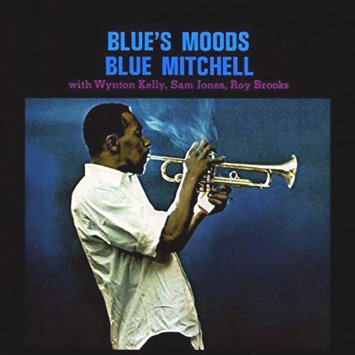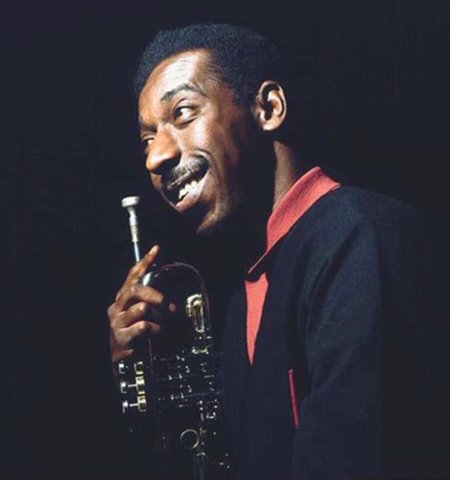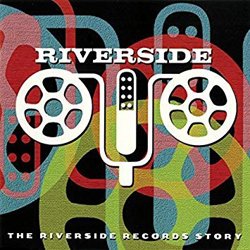Blue Mitchell (trompeta), Wynton Kelly (piano), Sam Jones (contrabajo) y Roy Brooks (batería). extraído del álbum Blue’s Moods (1960) de Blue Mitchell.
Con su debut como líder Big 6 (1958) para Riverside Records y su aparición en Portrait of Cannonball (1958) del saxofonista alto Cannonball Adderley, el trompetista Blue Mitchell adquirió suficiente reputación como para trabajar con el pianista y pionero del hard bop Horace Silver, y el organista y padre del soul jazz Jimmy Smith. Sin embargo, Blue’s Moods fue su primer álbum como trompetista en solitario, y es el que mejor define su estilo, además de constituir una demostración de hard bop puro, lírico y enérgico. Uno de los mayores retos para un músico de jazz es liderar un cuarteto, puesto que no hay nadie detrás de quién esconderse. En la primera parte de su carrera, Mitchell estaba preocupado por no estar desarrollando todo su potencial, y por eso esta grabación fue un punto de inflexión para él. La excelente participación del pianista Wynton Kelly le proporcionó un gran apoyo en su búsqueda del blues en las melodías.
With his debut as a leader Big 6 (1958) for Riverside Records and his appearance on Portrait of Cannonball (1958) by alto saxophonist Cannonball Adderley, trumpeter Blue Mitchell gained enough of a reputation to work with pianist and hard bop pioneer Horace Silver, and father of soul jazz and organist Jimmy Smith. However, Blue’s Moods was his first album as a solo trumpeter, and its the one that best defines his style, as well as being a demonstration of pure, lyrical and energetic hard bop. One of the biggest challenges for a jazz musician is to lead a quartet, since there is no one to hide behind. In the early part of his career, Mitchell was concerned that he wasn’t developing his full potential, and so this recording was a turning point for him. The excellent participation of pianist Wynton Kelly provided great support in his search for blues in the melodies.

En este álbum podemos encontrar una amplia gama de sentimientos y tiempos, desde el acelerado clásico del bebop «Scrapple from the Apple» hasta la hermosa balada «When I Fall In Love». Casi todos los temas son versiones de estándars, pero «Sir John» es una composición de Mitchell y «Kinda Vague», en el que toca la corneta, lo escribió junto a Kelly. Incluso hoy en día, su solo en «I’ll Close My Eyes» es todavía aprendido por los estudiantes de jazz. Sus improvisaciones tienen mucho swing y son muy creativas, y su sonido es cálido y agradable, pero nunca recibió el reconocimiento que merecía debido a que coincidió en el sello Blue Note con los grandes trompetistas Lee Morgan, Donald Byrd y Freddie Hubbard.
On this album we can find a wide range of feelings and tempos, from the fast-paced bebop classic “Scrapple from the Apple” to the beautiful ballad “When I Fall In Love”. Almost all the tracks are standard covers, but “Sir John” is Mitchell’s own composition and “Kinda Vague”, in which he plays cornet, was co-written with Kelly. Even today, his solo on “I’ll Close My Eyes” is still learned by jazz students. His improvisations swing hard and are very creative, and his sound is warm and pleasant, but he never received the recognition he deserved because he coincided on the Blue Note label with the great trumpeters Lee Morgan, Donald Byrd and Freddie Hubbard.

La sección rítmica hace la introducción y enseguida entra Mitchell a exponer el tema. La melodía es alegre y optimista, capaz de subir el ánimo a cualquiera. Luego el propio Mitchell comienza un solo con su característico tono claro e impecable, y líneas melódicas muy bien construidas. Sin hacer malabarismos, su diálogo es imaginativo y estimulante. A continuación llega Kelly con un solo fluido y lleno de vitalidad hasta que vuelve Mitchell para tocar algunas frases más antes de reexponer el tema.
The rhythm section gives the introduction and Mitchell comes in right away to lay out the theme. The melody is cheerful and optimistic, capable of lifting anyone’s spirits. Then Mitchell himself begins a solo with his characteristic clear and flawless tone, and very well crafted melodic lines. Without juggling, his dialogue is imaginative and stimulating. Next Kelly arrives with a flowing solo full of vitality until Mitchell returns to play a few more sentences before restating the theme.

Translated with the help of DeepL
℗ Riverside Records


This sounds so familiar… but I can’t say where from.
It's a well-known jazz standard. You've probably heard Frank Sinatra's version.